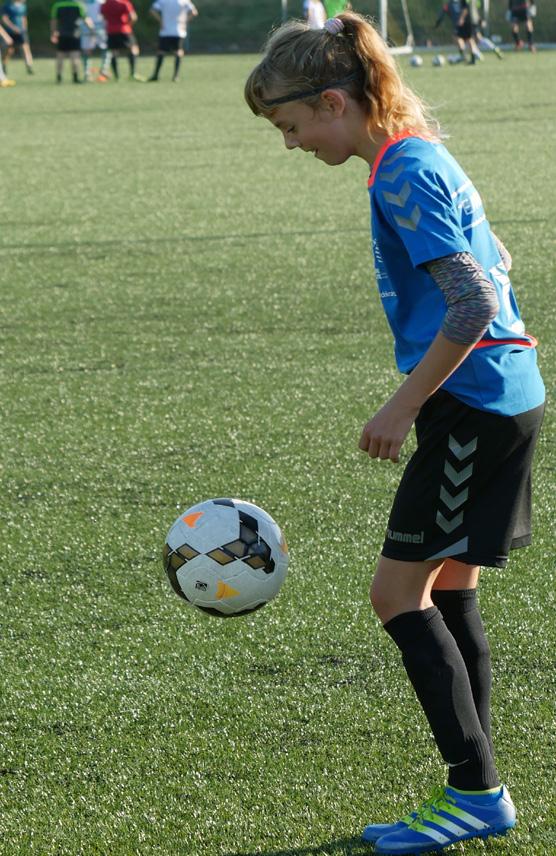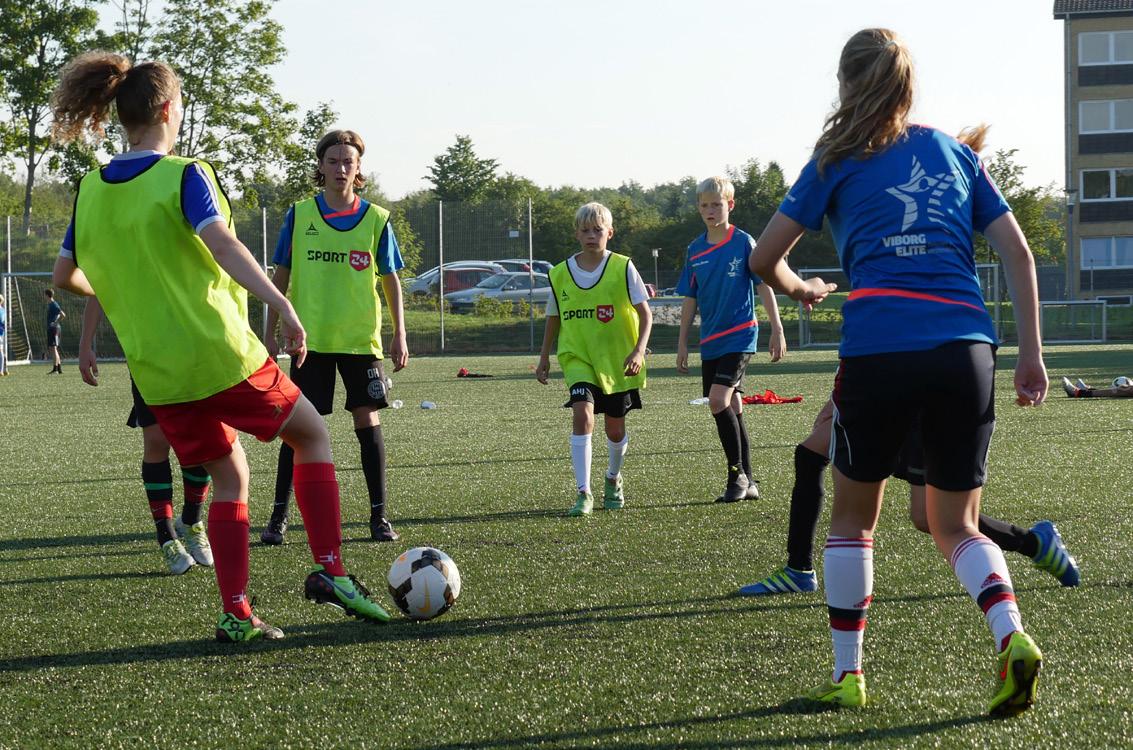
4 minute read
Executive Summary
Sportstech innovation in football – academic literature review
Sportstech innovation is an evolving research area, with sports innovation and football innovation and entrepreneurship being identifiable as key areas. Our literature survey shows a limited number of 25 publications within football Sportstech innovation and entrepreneurship at elite and professional level, indicating that football innovation as a separate research area is in its infancy. The results show that research primarily focuses on the contexts of player performance, including team performance analysis, performance tracking, training, and injury prevention/rehabilitation. This is done through tracking technologies, automated data analysis and processing, video analysis, skill practice assisting technology and treatment technologies. Football analysts are the main consumer of the technologies identified, but coaches and physiotherapists are also represented. The results indicate that research is focused on developing new technologies, and to a lesser degree, on further development, implementation, adoption, and impact. Furthermore, there appears to be a gap between academia and practice which needs to be addressed in further innovation. Even though we evaluated how our identified articles in the review were disseminated to the football practitioners, it is our strong belief that further work is needed to support stronger academia-industry collaboration through the development of common language and knowledge-sharing platforms. Further work is therefore needed to explore the balance between the needs and challenges in the football clubs and the maturity of technology. Some clubs might be capable of taking the risk to invest in technology at an early development stage, but more insight is needed to pursue potential collaboration partners and support further innovation in Sportstech. One avenue could be to draw on theory and methods from the design research tradition, such as the Design Thinking approach and the PACT framework utilized in this report. To support further innovation, academia should engage in research in practice, extending the current focus on research being conducted in the initial design phases and experimental settings to also include implementation, adoption, and impact studies in practice.
Advertisement
Sportstech innovation in the industry from a typology and startup perspective – The FootballTech Multiform Matrix
The sports industry is a very broad area which cuts across many other industry sectors. Innovation in the sports industry is nowadays primarily driven by startups that harness the latest technologies to propose novel solutions targeted at Athletes, Fans and Executives as end-users.
A review of existing Sportstech innovation typologies revealed 4 main categories of innovation areas: Performance, Training & Health solutions aimed at Athletes, Social & Fan engagement solutions aimed at Fans, Facilities & Events solutions and Media & Sponsorship solutions aimed at Executives of organizations involved in sports.
Combining this user-centric categorization with a categorization of technology in a 2-dimensional matrix allowed us to propose a General Sportstech Matrix which we found helpful for getting a better understanding of the current status of Sportstech, mapping football tech innovation from a startup perspective in Denmark, and developing a common language amongst stakeholders for future collaboration within a football innovation centre. It should be noted, however, that many startups operate across or innovate at the intersection of some of the categories. Our research, which did not include the e-sports and sports betting industries (as these can be considered separate industries with eco-systems of their own), revealed that 28 Denmark-based startups currently in operation have football as a main or strong focus. We found that 75% of them operate in the Activity & Performance category versus only 31% globally. Conversely, Fans & Content, and Media & Sponsorship to a lesser extent, and Management & Organization as well are under-represented by Danish startups when compared to the current global trend and are therefore potential future areas of innovation. The various categorizations identified through our research and the dynamic nature of the sector called for a solution to represent the multiple dimensions of the Danish football tech startup ecosystem in a collaborative and dynamic way. We found a suitable solution using the Airtable application and created a database capturing the various dimensions and relevant attributes of Denmark-based football tech innovation startups, which we called the FootballTech Multiform Matrix. It also accounts for the cross-category nature of most startups by allowing them to be categorized across multiple categories of the same typology. This matrix provides a multi-dimensional typology and a powerful collaboration tool for sports tech innovation stakeholders to speak a common language, perform sector analyses, and identify innovation opportunities. It is hoped that it can facilitate matchmaking amongst stakeholder groups and provide greater opportunities for industryacademic collaborations.
While Denmark could benefit from more collaboration across stakeholders, it is already very well positioned in football innovation. Whether through the current research and academic-industry partnerships, the use of technology and innovative approaches taken by certain football clubs, the innovation projects that the clubs, Danish League, the Danish Football Association and other
organizations have initiated, or the innovative drive coming from startups and the emerging football innovation cluster.
The vision of the new football innovation centre is to be acknowledged nationally and globally as doing groundbreaking and basic innovation in Danish football. The Innovation Centre is integrated into a joint national football centre and thus led by a strong quadruple helix consortium: Academia (SDU), Municipality (Odense), Civil Society (DBU, representing 1700 clubs, most of which are run by volunteers) and Industry (Danish league, representing pro and semi pro clubs), while inviting other stakeholders (academia, municipalities, civil society, and industry) to collaborate. Keeping such a database up to date is critical and can become a laborious task given the very fast evolving nature of this industry. Partnering with global databases could be one option, but these lack local market knowledge. Startup validation of entries could be another more suitable option. The Matrix could be further expanded to include relevant international football tech innovation startups. The data ownership and accessibility of such a database should be carefully considered.






